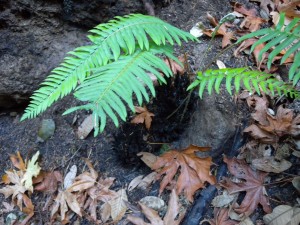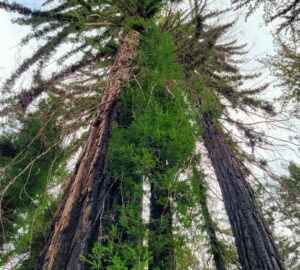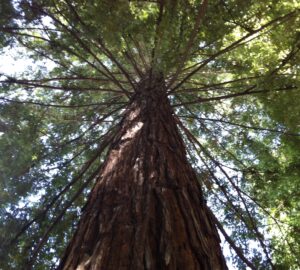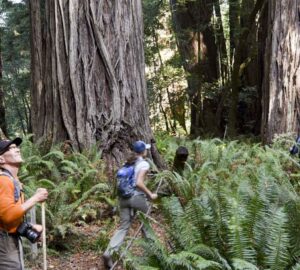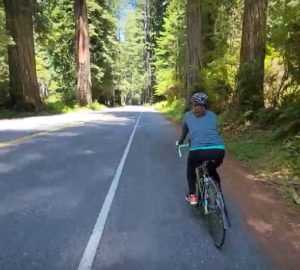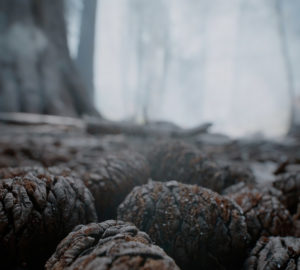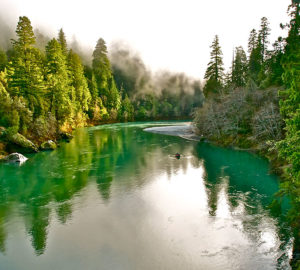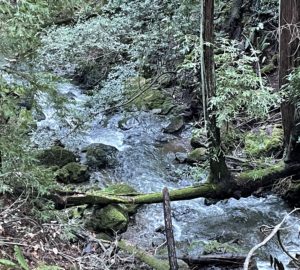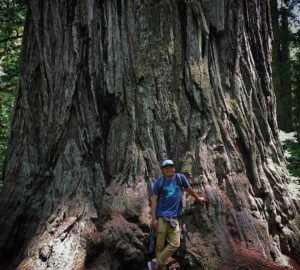When a forest fire blazes, it seems like the path of destruction will result in irreversible change for the woods. Fire does indeed leave its mark among the redwoods, but I’m struck over and over again how quickly forests can spring back to life.
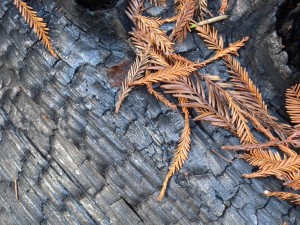
After the Lockheed fire burned in the Santa Cruz Mountains in August 2009, I had the opportunity to venture up Scott’s Creek with scientists studying salmon to survey the fire damage. I walked up the charred creek bank about one month after this devastating fire and found redwoods with blackened bark and heat-killed foliage hanging limp from charred branches. I saw burned shrubs and fallen logs. The forest appeared severely damaged, but then I saw the first signs of recovery.
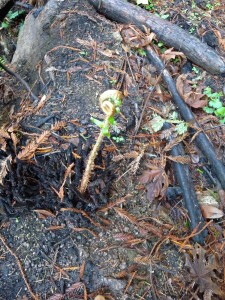
Sword ferns that had lost all their fronds in the fire were already replacing their crowns. It was fall, the wrong time for spring fiddles of new growth, and yet these persistent plants of the forest floor were sending up new leaves. The soft fiddleheads were pale green against the black singed fern base, a stark contrast and undeniable sign that the forest was already recovering.
Read more about forest fire impacts here.
